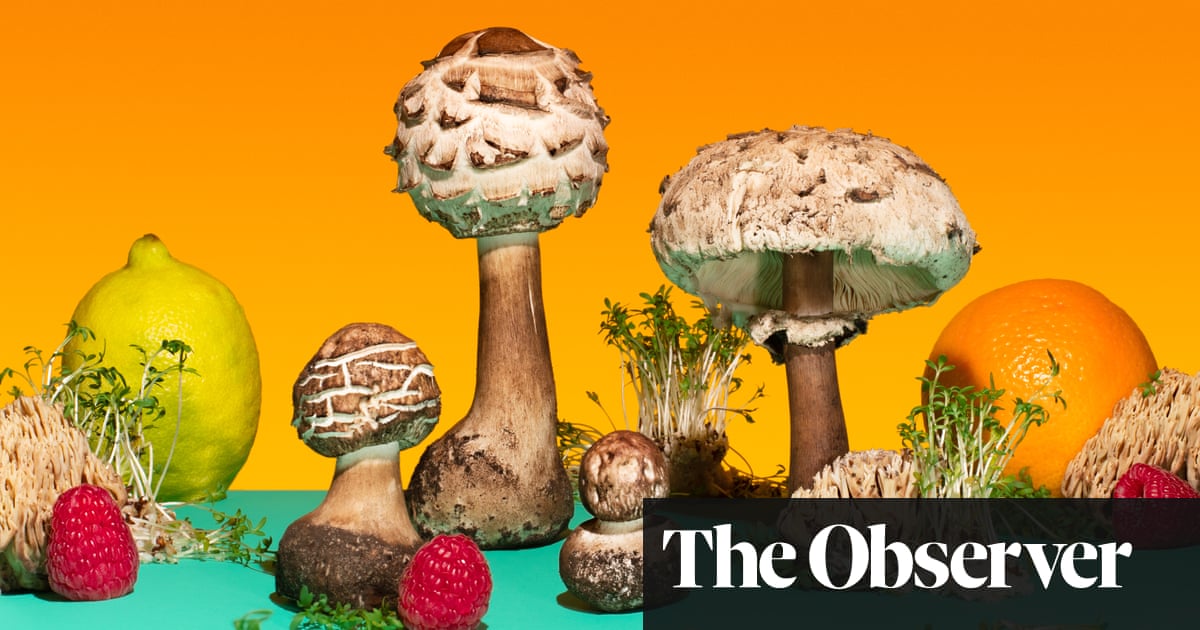
An increasing number of gardeners are growing mushrooms in their vegetable patches to improve soil quality and grow food in small spaces.
Mushrooms are now cultivated in the kitchen garden at Kew Gardens in south-west London and visitors have been keen to know how they might grow their own. Hélèna Dove, Kew’s head kitchen gardener, says: “Mushrooms have seen a great rise in popularity and we’ve seen a huge amount of interest from visitors since we installed our mushroom beds in Kew’s kitchen garden this autumn.
“Much of the interest comes from growing a food in what is typically an unused space – the shade below a tree or even a shed. For those without a garden, mushrooms can be grown very easily indoors, and as pre-inoculated kits are easy to grow, it is a successful crop for those who don’t yet have green fingers. It is also relatively hard to find a wide variety of mushrooms in the shops, whereas growing your own opens up a world of choice.
“Awareness is also growing around the potential risks that foraging from the wild can pose to fragile ecosystems and growing your own can help reverse this trend,” says Dove.
Next year the Royal Horticultural Society will create a fungi display at the Chelsea flower show for the first time. Lorraine Caley, who founded her mushroom-growing company Caley Brothers in 2018, will be showcasing her oyster mushrooms in the Great Pavilion in May after more and more people expressed an interest in growing fungi.
She and her sister, Jodie Bryan, started growing mushrooms at their Sussex home as they could not find the more exotic varieties in their local supermarket. “Back in 2018, we physically couldn’t get the gourmet mushrooms we wanted to eat. We changed our diet because our dad was poorly. And we wanted to expand from the button mushroom,” says Caley.
“We’d seen this stuff online and started growing for ourselves. But we had so much demand, people’s curiosity forced us to start making our own kits. Then in lockdown, everyone we supplied fresh mushrooms to wanted their own kits to grow them at home. It’s been phenomenal. I mean, the direction it’s taken us in is far beyond anything we ever imagined.”
The sisters use coffee grounds as a substrate and also grow fungi out of wood. Though they may not have the colourful appeal of a dahlia, or the pearly petals of a crocus, fungi add interest to a garden and also benefit the soil. “You can take your kit and put it into the garden where it will then get you more nutrients for your soil,” said Caley. “At Kew Gardens we’ve installed an outside mushroom bed, and that’s nine different mushrooms that can be grown in seven different mediums. So mushroom beds, totems, logs, straw bales. We were trying to encourage people with space outside to go outside, but you can also put a couple of logs on your balcony. Or if you’ve got a small flat like I have, you can grow in your kitchen as well.”
Taking soil health into consideration is also in vogue and fungi are crucial for this. The caps of a mushroom are only a tiny part of the organism. Under the ground, the fungi create a living network called a mycelium. “This conditions soil. It breaks down the detritus on the ground and takes it down into the soil and that helps enrich it,” says Caley. “You get a lot of worms. It also aerates the soil and it creates the conditions you need for soil biodiversity.”
Mushrooms to grow at home
Mushrooms can be grown at home in many different ways, from buying a simple indoor kit, which can be found online or at some farmer’s markets, to experimenting in the vegetable patch. Indoor growing tends to yield the best results as outdoor conditions have an influence on success or failure of mushrooms grown in beds.
For varieties that enjoy coffee grounds as substrate, this alternative fertiliser can usually be obtained for free from a local coffee shop. You can buy mushroom spawn online to grow in beds or boxes filled with manure or compost. Or you can buy a kit that usually includes the spawn and growing media.
If you have logs handy, you can drill holes in the logs and put in “plugs” from which to grow spores. Once planted, you need to keep the habitat moist to the touch. Mushrooms in logs can take up to 18 months to appear, but those in substrate can appear in weeks.
For a beginner, oyster mushrooms are by far the best bet (and delicious too). They are easy to grow and come in different colours: blue, pink and golden. They love all sorts of substrates, including coffee grounds.
Shiitake mushrooms have a delicious taste and long shelf-life and can be grown on logs in a shady space outside or in sawdust indoors.
Lion’s mane mushrooms are striking to look at with their shaggy caps. They grow fast, fruit easily, and have many health benefits.












